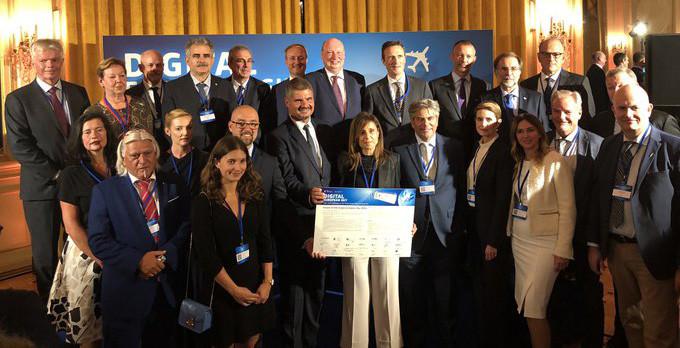
On 11 September, 20 aviation stakeholder groups signed a joint declaration, signalling among other things the need to continue with the digital transformation of the industry. The declaration was made as a part of a high-level conference on the future of the Single European Sky, organised under the Finnish Presidency of the European Union.
With the signing of the declaration, the stakeholders agree to intensify their collective efforts to fully implement the Single European Sky (SES) initiative, bringing fresh momentum as acknowledged by Henrik Hololei, Director General of the European Commission Directorate General for Transport and Mobility. “We are mobilised today to build the momentum for significant change. We have a new chance now, we must use it. Together!”
The need for urgent action is clear; “Congestion and a lack of capacity in the air and ground are among the biggest current challenges of European aviation. It contributes to higher CO2 emissions, as airlines have to fly longer routes. This is unacceptable,” underlined Mr Hololei. This sense of urgency was shared by Marin Sanna, Finnnish Minister for Transport and Communications, who reminded participants that the primary objective of all stakeholders must be to deliver air transport services that meet the needs of customers and place as little pressure on the environment as possible.
Digital technologies can help tackle the inefficiencies in air traffic management. This was the shared view of panellists during a session on giving a fresh boost to digitalisation. Jean Ferré of Thales Group noted how digital technologies were enabling air traffic control to be more flexible in terms of service provision - creating new value for passengers and airports. Noting the successful delivery of solutions through the SESAR Joint Undertaking partnership, Grazia Vittadini, Chief Technology Officer of Airbus, underlined the need to continue pooling resources in order to deliver the tech on time.

Airspace Architecture Study Transition Plan
Coinciding with the conference is the publication by the SESAR Joint Undertaking of the Airspace Architecture Study transition plan, outlining a way forward on airspace modernisation in the next five years – Read about the plan
The aim of the plan is to further accelerate modernisation efforts that have gained pace already since the start of the SESAR research and innovation 10 years ago – Read about the acceleration of ATM innovation.
